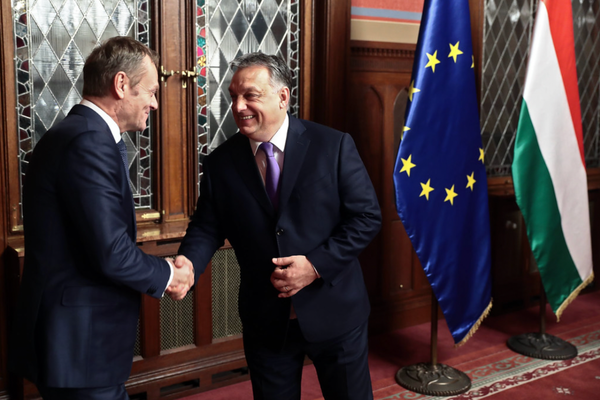Armed Drones and Terrorism: The Territorial Trap, Techno-Fetishistic Blindness, and Uninterrogated Definitions of Terrorism of Schwartz, Fuhrmann, and Horowitz

By Tayson Reese, University of Chicago
Given the global proliferation of and increasing reliance on uninhabited aerial vehicles (UAVs) in emerging global counterterrorism efforts over the 21st century, a contentious debate has emerged among scholars of international relations on the fundamental efficacy of UAVs as tools of counterterrorism. This discourse on the efficacy of drones has become organized into two competing schools of thought: drone pessimism and drone optimism. Drone pessimists argue that UAVs increase terrorism, while drone optimists assert that UAVs effectively decrease terrorism. In their 2022 article, “Do Armed Drones Counter Terrorism, or Are They Counterproductive? Evidence from Eighteen Countries,” Schwartz, Fuhrmann, and Horowitz intercede into the UAV debate in order to determine whether drone optimistic or drone pessimistic analyses are correct. This article constitutes a comprehensive and valuable contribution to the body of UAV scholarship as Schwartz et al. employ a cross-national, macro-level quantitative analysis, whereas previous studies were constrained to examining the relationship between terrorism and UAV use in only a single country. However, I argue that Schwartz et al.’s analysis is incomplete and ultimately flawed as it is fundamentally constructed upon faulty foundations of Euro-centric assumptions on national sovereignty and borders as well as myopic and racialized formulations of terrorism borne of uninterrogated hegemonic paradigms and a techno-fetishistic occlusion of corporeality. By examining this article through the critical theories of Agnew, Welland, and Meier, the underlying false assumptions of Schwartz et al. scholarship on UAVs are laid bare, and their conclusions are cast into doubt. Furthermore, a deconstruction of this text offers significant insights into the persistent and pervasive ideological shortcomings in contemporary international relations studies on terrorism and security.
Schwartz et al.’s essential research question, and indeed that of the discourse between drone pessimists and drone optimists, is whether UAVs are effective in combating terrorism.[1] The authors approach this question by examining data from the Global Terrorism Database on the number of terrorist attacks and the number of people killed in terrorist attacks in eighteen nation-states from 2001 to 2019, with single years as the unit of measurement, in order to establish a measure of terrorism which accounts for both transnational and domestic terrorism attacks.[2] The authors then examine the relationship between this measure of severity of terrorism and whether the country of study possesses UAVs, has fired munitions from UAVs, or has pursued the acquisition of UAVs, which is determined through examination of media reports, defense trade publications, and reports by think tanks.[3] In order to identify the causal relationship between these variables, Schwart et al. also establish seven control variables in their treatment of data for each nation. The variables are GDP per capita, regime type, whether the country is in a civil war, the extent to which the country is a failed state, the level of human rights violations, the amount of counterterrorism aid received from the United States, and the level of terrorism in surrounding states.[4] These factors are combined and treated to create a “difference-in-differences-like” statistical model, which Schwartz et al. assert is sufficient to conclude on the causal relationship between UAVs and terrorism.[5] The authors further vouch for the integrity of their model and the significance of derived conclusions through the application of several robustness tests, wherein alternate variables are introduced and states are excluded from the data set in order to ensure that only one nation of the eighteen under study is responsible for their findings, among other treatment methods.[6]
The primary finding of Schwartz et al.’s paper is a statistically significant negative relationship between UAVs and terrorism, thus concurring with the perspective of drone optimists.[7] Schwartz et al. conclude that by obtaining UAVs, states experience 5.5 fewer terrorist attacks per year, representing a 35% decrease in the prevalence of terrorist attacks. Furthermore, states experience a greater decrease in incidents of terrorism, a decrease of 7.25 attacks per year, after conducting at least one UAV strike.[8] Schwartz et al. present these findings and their study as a whole as a more comprehensive and significant investigation of the efficacy of UAVs as counterterrorism tools than had previously been conducted. The paper presents itself as a fundamental advancement in UAV studies that surpasses previous scholarship that has hitherto been limited by overly short frames of study and a lack of simultaneous analysis of several nations.[9] As such, Schwart et al. position their research as a definitive conclusion to the debate between drone optimism and drone pessimism, with unambiguous support for the drone optimist perspective.
However, there are several uninterrogated presuppositions that compromise Schwartz et al.’s confident conclusions on the benefits of UAVs. Specifically, Schwartz et al.’s research design, statistical model, and assertive conclusions are derived from the incomplete paradigm within international relations studies of the totality of state sovereignty and territorial integrity. Additionally, Schwartz et al. rely on insufficiently critical definitions of terrorism and terrorists, thus failing to untangle and account for the inherently political and ideological nature of these terms. To critically analyze this text and deconstruct these faulty assumptions, I will employ Agnew’s critiques of the “territorial trap” and theoretical deficiencies in conceptions of state spatiality underpinning international relations theory as well as Meier’s investigation of the hegemonic origins of which people and what actions are labeled as terrorist and terrorism. This deconstruction of what constitutes terrorism is further supported by applying Welland’s conception of hyper-visibility and invisibility of bodies resulting from the techno-fetishistic visual grammar of drone warfare.
According to Agnew, contemporary, conventional international relations theory incorrectly holds the essential territoriality of states as granted, objective, and universal.[10] In other words, predominant international relations wrongly assume that national borders operate as absolute demarcations of national sovereignty and containers of society with each country as a homogenous cultural singularity that neatly ends at its border, seamlessly and totally differentiated from its neighbors, who similarly exists as uniform cultural and political objects.[11] As a result of this geographical essentialism, non-critical theories of international relations inevitably fall into a “territorial trap,” replete with false conclusions and ideological blindspots that hamper truly profound and correct analyses of geopolitical reality.[12]
Applying Agnew’s critique of this territorial trap at the core of non-critical formulations of international relations to Schwartz et al.’s study elucidates its essential ideological flaws and false presuppositions, which undermine its assured conclusions, purported resolution of the discourse surrounding UAVs, and claims to far-reaching policy implications. Indeed, Schwartz et al. take the territorial integrity of the states that constitute the objects of their study for granted. This assumption is particularly problematic in their inclusion of Iran and Türkiye.[13] Schwartz et al. use the example of Turkish UAV operations against the Kurdish separatist movement and the Kurdistan Workers’ Party to illustrate the degradation hypothesis of drone optimism as well as include data on Türkiye in their statistical model with no mention of complex sovereignty and vague territorial demarcations of the Kurdistan situation.[14] Furthermore, Schwartz et al. include Iran in their data set while similarly making no mention of Iran’s ambiguous territorial limits.[15] One such example of the interactions between Iran’s non-rigid territorial integrity and the implementation of UAVs are the recent strikes performed by Iran and Pakistan against separatist and terrorist organizations in Balochistan, a region currently administered by Afghanistan, Pakistan, and Iran.[16] While these strikes were performed only as of January 2024 and thus occurred after the publication of Schwartz et al.’s article, they nonetheless serve as an essential case study and an indication of the far more fluid condition of Iran’s territory than is recognized by Schwartz et al. Lastly, Schwartz et al. use the prevalence of terrorism in neighboring countries as one of their control variables, which similarly indicates the compromising presupposition of the absoluteness of borders that exists throughout the article.[17] Given these factors, it is clear that Schwartz et al. have fallen into the territorial trap identified by Agnew and flattened the complexities of the nations that they have studied in their pursuit of stark quantitative findings.
Furthermore, Schwartz et al. rely on uncritical definitions of terrorism, which fail to adequately address the political and hegemonically derived nature of what peoples and actions constitute terrorism. Meier explains that what agents and acts of political violence are labeled and treated as terrorism (or not) is not politically neutral or objective. Rather, the label of terrorist is informed by persistent, racialized structures of power and pervasive undercurrents of hegemony, national identity, and social control.[18] Indeed, Schwartz et al. derive their measure of terrorism, the main dependent variable of their study, from the Global Terrorism Database, an American institution and data set originally derived from information obtained from the Pinkerton Global Intelligence Services, a private security agency deeply historically intertwined with the United States’ national security apparatus.[19] Rather than critically examining the ideological presuppositions of this data set, Schwartz et al. simply accept it as fact and derive their measure of terrorism solely from this source.[20] As such, Schwartz et al. 's definition of terrorism, the primary object of study of the article, is deeply flawed, casting the entirety of the study into jeopardy.
Lastly, I posit that Schwartz et al. 's insufficiently critical definition of terrorism is additionally indicative of what Welland identifies as a techno-fetishistic portrayal of warfare that absents certain agents. Welland writes that the visual grammar of 21st-century warfare, especially counterinsurgency, exemplified by UAV warfare with its “‘smart’ bombing raids” and sanitized drone control rooms, rendered the bodies of British soldiers, the focus of her inquiry, invisible and absented from overall cultural perceptions of warfare and soldiering bodies.[21] In their summary of the civilian blowback line of argument of drone pessimists, Schwartz et al. comment on UAVs’ propensity to cause mass psychological terror and collateral killings among civilian populations.[22] Indeed, why then are UAVs positioned solely as a tool of counterterrorism rather than potentially another aspect of terrorism itself, given that Schwartz et al. concede their tendency to create mass terror amongst civilians? While it is perhaps not viable or correct to define UAVs as tools of terrorism, Schwartz et al. should have interrogated the extent to which their presupposition of UAVs as counterterrorism tools was rooted within a techno-scientific discourse and resultant cultural blindness toward the bodies of agents of state violence and their victims, as identified by Welland.[23]
Given the numerous uncritical ideological presuppositions of international relations that are rooted in territorial absolutism, assumptions of terrorism as an objective label rather than a politically mediated instrument of hegemony and racialized power structures, and a lack of consideration of which bodies are concealed by the techno-fetishism of UAV warfare, I believe that Schwartz et al.’s article is constructed upon a fundamentally flawed premise. Thus, their assertive conclusions of having solved the discourse among UAV scholars must be disregarded. Furthermore, Schwartz et al.’s endorsement of the use of UAVs as an effective counterterrorism policy must be treated with great skepticism. In conclusion, in light of the critical theories of Agnew, Meier, and Welland, “Do Armed Drones Counter Terrorism, or Are They Counterproductive? Evidence from Eighteen Countries” should be regarded at best as fundamentally compromised due to its reproduction of several problematic assumptions which persist at the heart of contemporary, mainstream international relations theories. At worst, this article is a materially deleterious influence on concrete military policies, potentially perpetuating unjust security practices around the world.
[1] Schwartz, Joshua A, Matthew Fuhrmann, and Michael C Horowitz. “Do Armed Drones Counter Terrorism, Or Are They Counterproductive? Evidence from Eighteen Countries.” International Studies Quarterly 66, no. 3 (August 30, 2022): sqac047. https://doi.org/10.1093/isq/sqac047, 2.
[2] Schwartz, Fuhrmann, and Horowitz, “Do Armed Drones Counter Terrorism, Or Are They Counterproductive?”, 5.
[3] Schwartz, Fuhrmann, and Horowitz, “Do Armed Drones Counter Terrorism, Or Are They Counterproductive?”, 4.
[4] Schwartz, Fuhrmann, and Horowitz, “Do Armed Drones Counter Terrorism, Or Are They Counterproductive?”, 5.
[5] Schwartz, Fuhrmann, and Horowitz, “Do Armed Drones Counter Terrorism, Or Are They Counterproductive?”, 2.
[6] Schwartz, Fuhrmann, and Horowitz, “Do Armed Drones Counter Terrorism, Or Are They Counterproductive?”, 9.
[7] Schwartz, Fuhrmann, and Horowitz, “Do Armed Drones Counter Terrorism, Or Are They Counterproductive?”, 7.
[8] Schwartz, Fuhrmann, and Horowitz, “Do Armed Drones Counter Terrorism, Or Are They Counterproductive?”, 12.
[9] Ibid
[10] Agnew, John. “The Territorial Trap: The Geographical Assumptions of International Relations Theory.” Review of International Political Economy 1, no. 1 (1994): 54. https://doi.org/10.1080/09692299408434268.
[11] Agnew, “The Territorial Trap.”, 56.
[12] Ibid
[13] Schwartz, Fuhrmann, and Horowitz, “Do Armed Drones Counter Terrorism, Or Are They Counterproductive?”, 6.
[14] Schwartz, Fuhrmann, and Horowitz, “Do Armed Drones Counter Terrorism, Or Are They Counterproductive?”, 4.
[15] Schwartz, Fuhrmann, and Horowitz, “Do Armed Drones Counter Terrorism, Or Are They Counterproductive?”, 6.
[16] Ellis-Petersen, Hannah, and Hannah Ellis-Petersen South Asia correspondent. “Where Is Balochistan and Why Is It the Target of Iran and Pakistan Strikes?” The Guardian, January 18, 2024, sec. World news. https://www.theguardian.com/world/2024/jan/18/where-balochistan-why-iran-pakistan-strikes.
[17] Schwartz, Fuhrmann, and Horowitz, “Do Armed Drones Counter Terrorism, Or Are They Counterproductive?”, 5.
[18] Meier, Anna A. “The Idea of Terror: Institutional Reproduction in Government Responses to Political Violence.” International Studies Quarterly 64, no. 3 (September 1, 2020): 507. https://doi.org/10.1093/isq/sqaa034.
[19] “History of the GTD,” n.d. https://www.start.umd.edu/gtd/about/History.aspx.
[20] Schwartz, Fuhrmann, and Horowitz, “Do Armed Drones Counter Terrorism, Or Are They Counterproductive?”, 5.
[21] Welland, Julia. “Violence and the Contemporary Soldiering Body.” Security Dialogue 48, no. 6 (2017): 526. https://doi.org/10.1177/0967010617733355.
[22] Schwartz, Fuhrmann, and Horowitz, “Do Armed Drones Counter Terrorism, Or Are They Counterproductive?”, 3.
[23] Welland, “Violence and the Contemporary Soldiering Body.”, 526.





